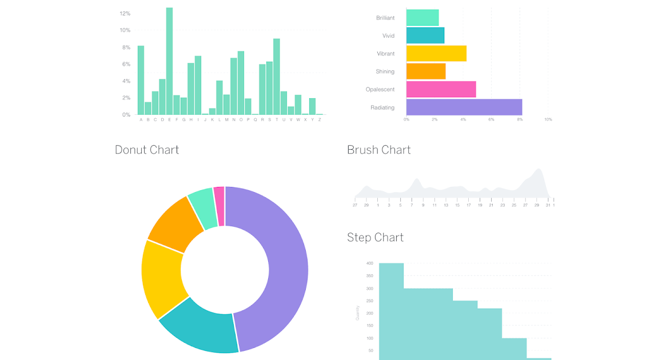Programming News
Dev
449

Image Credit: Dev
P++: A Language That Speaks Both Interpreter and Compiler
- P++ is a new experimental programming language designed to bridge the gap between ease of use and performance.
- Key features include Interpreter Mode for fast iteration and debugging, LLVM Compiler Mode for JIT/AOT execution and performance, a new REPL shell, and a simple syntax with an extensible architecture.
- Developers can switch between interpreted and compiled modes easily, allowing for fast prototyping and efficient execution when needed.
- The language supports a variety of features like inline assembly, memory management, and class definitions, aiming to combine the strengths of languages like Python and C++.
Read Full Article
27 Likes
Medium
349

Image Credit: Medium
Devstral Small: The best Software Engineering Agentic LLM by Mistral
- Mistral AI has introduced Devstral-Small-2505, a 24 billion parameter model designed for Software Engineering tasks, surpassing similar models in performance.
- Devstral is an agentic model that can think and act like a software developer, navigating codebases, editing files, and facilitating intelligent software engineering workflows.
- With a 128k token context window, Devstral is optimized for handling massive codebases. It is released under Apache 2.0 license, allowing free use, tweaking, and commercialization.
- Devstral, equipped with a high-capacity Tekken tokenizer, outperforms both open-source and closed-source models in code-heavy tasks, offering scalability and real-world performance for software engineers and agent developers.
Read Full Article
21 Likes
Dev
95

Image Credit: Dev
Shocking Things You Can Do in JavaScript
- JavaScript has evolved with powerful capabilities that eliminate the need for popular libraries, such as set operations that replace lodash, non-destructive array methods, and object grouping.
- New features like logical assignment operators, top-level await for async module initialization, and private class features enhance code conciseness and encapsulation.
- Text segmentation with Intl.Segmenter improves handling of languages without spaces between words, while Atomics and SharedArrayBuffer enable true parallelism in JavaScript.
- These features signify the continuous evolution of JavaScript, offering developers cleaner, more maintainable code and reducing reliance on external dependencies.
- By leveraging these native solutions, developers can optimize performance and discover the hidden capabilities of modern JavaScript.
Read Full Article
5 Likes
Medium
408

Image Credit: Medium
On Which Side Are You? ⚔️
- The conversation revolves around the impact of AI on jobs and businesses, with varying perspectives shared by the participants.
- Discussions include the role of AI in business growth, job stability, and global economic situations such as US-China tariffs.
- Concerns are raised about job saturation, automation, and challenges in job switching and immigration.
- While some emphasize the need for upskilling and acceptance of AI, others express fear about AI replacing jobs and its potential dangers.
- Debates on AI's influence on sectors like government, education, and healthcare are also mentioned, along with the need for ethical oversight.
- The conversation highlights contrasting views on AI's impact on job distribution, wealth inequality, and its evolving capabilities.
- Participants discuss the limitations and potential of current AI technology, emphasizing the importance of human oversight in AI development.
- The dialogue stresses the significance of problem-solving skills and adaptation in the evolving technological landscape.
- The notion that AI tools may enhance human capabilities rather than replace workers entirely is suggested.
- The discussion concludes with a thought-provoking insight that AI's imperfections can lead to human empowerment and new opportunities.
- Overall, the conversation showcases a nuanced exploration of AI's role in the future workforce and the potential benefits and challenges it presents.
Read Full Article
24 Likes
Discover more
- Software News
- Web Design
- Devops News
- Open Source News
- Databases
- Cloud News
- Product Management News
- Operating Systems News
- Agile Methodology News
- Computer Engineering
- Startup News
- Cryptocurrency News
- Technology News
- Blockchain News
- Data Science News
- AR News
- Apple News
- Cyber Security News
- Leadership News
- Gaming News
- Automobiles News
Medium
127
Image Credit: Medium
When Structured Meets Unstructured: A Love Story for the AI Era
- PSense.ai is building an intelligent document parser pipeline for a potential deployment opportunity.
- They showcased a real-world use case where a PDF order received via email was parsed, understood, transformed, and routed without any code.
- This AI-enhanced choreography of document parsing, semantic search, mapping, transformation, and delivery is powered by their visual builder, SCD.
- What used to take weeks of coding now takes minutes, giving documents a nervous system to interact with structured records.
Read Full Article
7 Likes
Javarevisited
363

Image Credit: Javarevisited
Top 5 Udemy Courses to learn D3.js for Data Visualization with JavaScript in 2025 - Best of Lot
- D3.js is a popular JavaScript library for creating interactive data visualizations on the web, commonly used by Data Scientists and Analysts.
- Several courses are available in 2025 to learn D3.js, teaching how to create interactive visualizations and charts by binding data to web elements.
- These courses cover basics of data visualization with D3, including building various types of charts like Bar charts, Pie charts, and Mind maps.
- Learning D3.js can be valuable for professionals needing to present data insights effectively to stakeholders and business audiences.
Read Full Article
21 Likes
Medium
155

To claim your $SUBBD airdrop tokens, follow these steps:
- Visit the Official SUBBD Website at subbdtoken.com to claim your $SUBBD airdrop tokens.
- Connect your wallet by clicking on 'Connect Wallet' and selecting your wallet provider (e.g., Best Wallet, MetaMask). Authorize the connection through your wallet interface.
- Claim your tokens by clicking on 'Claim Tokens' after connecting, and confirm the transaction in your wallet.
- If the tokens don’t appear automatically, manually add the $SUBBD token using its contract address provided on the SUBBD website or official communications. Ensure eligibility for the airdrop by meeting the criteria such as holding specific tokens or completing certain tasks.
Read Full Article
9 Likes
Medium
168

Image Credit: Medium
The Deva, Our DNA, and the Vimanika Shastra: Spittin’ in the Face of Science’s Blind-Ass Veil of…
- Subbaraya Shastry, the seer who brought us the Vimanika Shastra, tapped into cosmic knowledge from the Deva through psychic abilities like remote viewing and telepathy.
- Die Glocke, the Nazis' secret bell-shaped flying machine powered by a mysterious substance called Xerum 525, resembles technology described in the Vimanika Shastra, suggesting a hunt for ancient secrets and Vedic texts.
- The Veil of Maya, referred to in the Vedas, symbolizes science's limited perspective that dismisses concepts like the Vimanika Shastra and Die Glocke, while the Deva supposedly altered human DNA and provided knowledge for advanced flying machines.
- The article serves as a wake-up call to look beyond the limitations imposed by the Veil of Maya and explore the cosmic origins of humanity, as exemplified by figures like Subbaraya Shastry and advancements like Die Glocke.
Read Full Article
10 Likes
Medium
59

Image Credit: Medium
Unlock The Power Of Angular FormRecords: An Interactive Guide To Dynamic Forms
- Angular FormRecords provide a powerful tool for creating dynamic and interactive forms in web development.
- This article serves as a comprehensive guide to mastering Angular FormRecords, from basic setup to advanced interactive demos.
- By understanding FormRecords, developers can build responsive and user-friendly forms using Angular.
- Readers are encouraged to install Angular’s ReactiveFormsModule, experiment with the code, and share feedback for a hands-on learning experience.
Read Full Article
3 Likes
Dev
227

Image Credit: Dev
How to build index with text embeddings
- This blog focuses on building an index with text embeddings and querying it with natural language in a minimalistic approach.
- The indexing flow involves reading text files, chunking documents, embedding text with a model, and storing embeddings in a vector database.
- The process includes ingesting files, chunking and embedding text, and exporting the embeddings to a Postgres table using CocoIndex functions.
- Queries can be performed by writing SQL or utilizing the query engine of the target storage, with an example of a search function provided for querying the index interactively.
Read Full Article
13 Likes
Medium
81

Image Credit: Medium
Title: How to Earn Money Using ChatGPT: A Beginner-Friendly Guide (2025 Edition) By AI Content…
- Utilize ChatGPT for fast and efficient writing on platforms like Upwork, Fiverr, and Freelancer.com by mentioning AI-assisted writing skills and focusing on SEO or niche content.
- Offer AI-powered content creation packages for managing social media content like captions, hashtags, scripts, and engagement strategies to small businesses and influencers via Instagram or Facebook groups.
- Co-write eBooks, guides, or course outlines with ChatGPT and sell them on platforms like Gumroad, Payhip, or Etsy, with examples such as '30 Days of Motivational Quotes Generated by GPT'.
- Utilize ChatGPT for writing YouTube video titles, descriptions, scripts, and combine it with tools like CapCut or Canva for creating engaging video content rapidly, ideal for YouTubers or channel managers.
- Promote ChatGPT-related tools through affiliate links via blog posts or reviews written with GPT, leveraging platforms like Medium, Quora, or personal blog for increased visibility.
- Utilize ChatGPT for diverse tasks like writing resumes, cover letters, translating content, or unique services such as 'AI Caption Writer' for Instagram or 'Prompt Selling' for creating and selling prompts for GPT use.
- ChatGPT empowers humans for making extra income or building a business using practical content creation tips and AI hacks, indicating limitless opportunities when leveraged effectively.
- Connect with AI Content Creation 18 for more AI-centric content creation tips and hacks, showcasing the beginning of a new era in content creation.
Read Full Article
4 Likes
Dev
95

Image Credit: Dev
Daily JavaScript Challenge #JS-187: Find the Shortest Word in a Sentence
- Daily JavaScript Challenge: Find the Shortest Word in a Sentence
- Given a sentence, write a function to find the shortest word in the sentence. If there are multiple words with the same shortest length, return the first one that appears.
- Check out the documentation about this topic here: https://developer.mozilla.org/en-US/docs/Web/JavaScript/Reference/Global_Objects/String/split
- Join the discussion on approaches, edge cases, and learnings from this challenge in the comments below.
Read Full Article
5 Likes
Dev
172

Image Credit: Dev
Understanding Lifetimes with Real-World Analogy
- Rust's concept of lifetimes, while initially challenging, aims to prevent dangling references and ensure memory safety through its borrow checker.
- Lifetimes act as a contract between the compiler and the programmer, tracking the validity of references and data they point to.
- Analogies, such as borrowing books from a library, can help grasp the idea that references can only be valid for a specific duration.
- In Rust, explicit lifetime annotations like 'a' specify how long references remain valid, avoiding issues like dangling pointers.
- A simple example function in Rust compares string slices and returns the longer one, showcasing the use of lifetime parameter 'a'.
- Omitting lifetime annotations in Rust code leads to compilation errors as the compiler cannot infer how long references will be valid.
- Common pitfalls in working with lifetimes include returning references to temporary values and managing lifetimes of variables properly.
- Understanding lifetimes is crucial for memory safety and preventing issues like dangling references, making Rust's borrow checker a powerful tool.
- Further steps for learning lifetimes in Rust include experimenting with more examples and exploring advanced topics like struct lifetimes.
- With practice, lifetimes become more intuitive, showcasing how Rust's design choices prioritize safety and reliability in code.
Read Full Article
10 Likes
Dev
309

Image Credit: Dev
🧠 The Silence That Shipped Nothing: A Psychological Postmortem of My Fake Startup
- A fake startup called Whispr, offering 'Silence-as-a-Service,' was created as a parody of Silicon Valley's obsession with productivity and clarity.
- The Whispr platform implemented silent productivity, replacing meetings with ambient presence and using fake metrics like Neural Quietude Index™ and Void Engagement Coefficient.
- The experiment led to requests for the Whispr SDK, inquiries about its availability, and offers for brand collaboration, blurring the line between parody and reality.
- Whispr sheds light on the noise economy in tech and the social theater of work, showcasing how silence can reveal the underlying rituals and mysticism present in the industry.
Read Full Article
18 Likes
Dev
413

Image Credit: Dev
# 🧩 nodeBond: Lightweight IPC for Node.js — revived and improved
- NodeBond is a lightweight IPC bus for local Node.js microservices, providing a refreshed and improved method of inter-process communication.
- It simplifies connecting Node.js processes on the same machine, removing the need for complex serialization, routing, and error handling.
- Key features of NodeBond include a central hub for managing services, shared in-memory state, CLI tools for control, and improved version 4.0.0 enhancements.
- NodeBond is suitable for scenarios where applications are split into isolated services, local communication is preferred, and real-time monitoring and testing are necessary.
Read Full Article
24 Likes
For uninterrupted reading, download the app